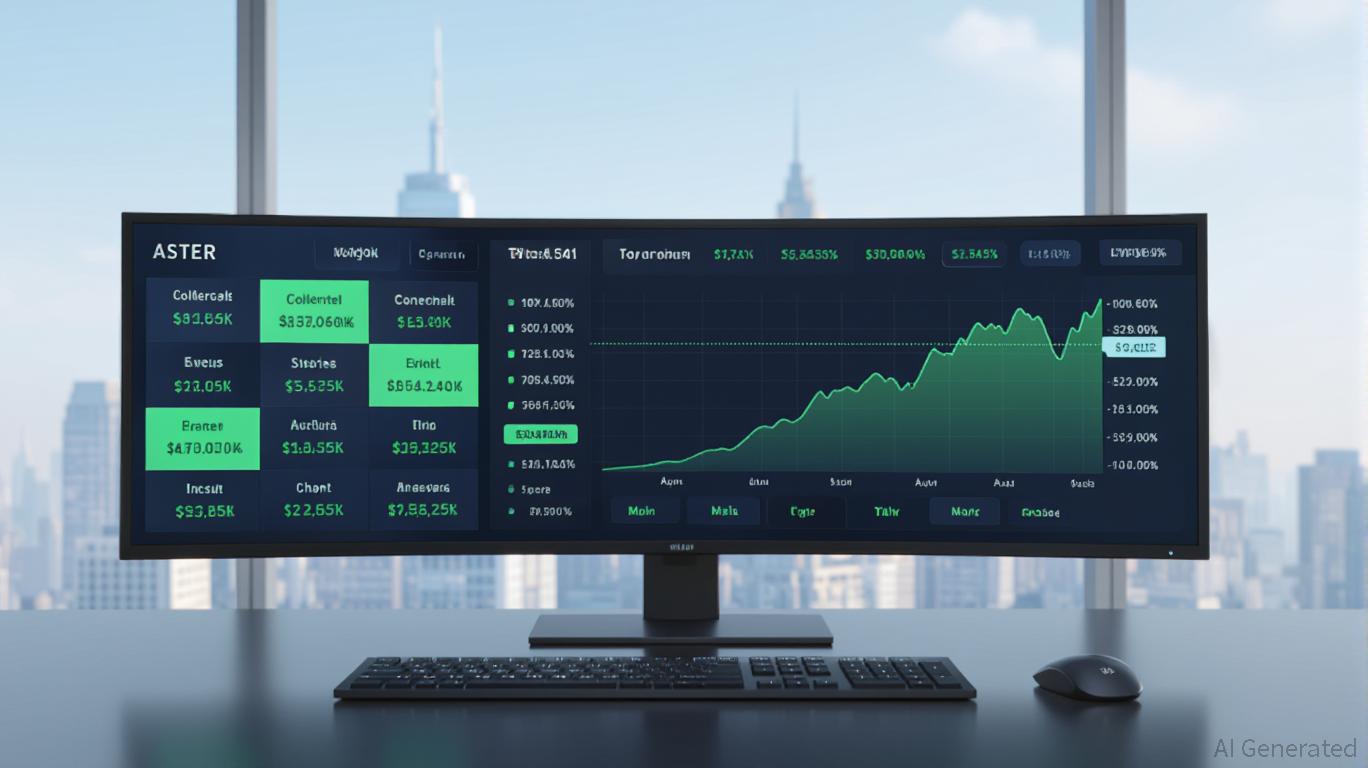Dash Falls 17.83% Within a Day as Analysts Lower Targets and Major 2026 Expenditure Announced
- DoorDash (DASH) fell 17.83% in 24 hours amid analyst target cuts and 2026 spending plans. - Goldman Sachs and others reduced price targets, averaging $286.55 (41.83% upside). - Q3 revenue rose 27% to $3.4B, but near-term profits lagged due to costs; CEO Tony Xu plans AI/robot investments. - 2026 spending will increase by hundreds of millions to integrate Deliveroo into a global tech stack.
On November 8, 2025,
Goldman Sachs has revised its price target for
DASH’s technical outlook has been mixed. The company posted a 27% year-over-year revenue increase in the third quarter, reaching $3.4 billion, fueled by higher order volumes and gross order value. However, short-term profits missed forecasts due to increased operating expenses. CEO Tony Xu outlined plans to invest in next-generation delivery technology, such as autonomous robots and AI-powered systems, though these efforts will require substantial capital. Despite a 19% gain since the start of the year, the stock has fallen 22% this quarter.
DASH is planning to ramp up spending by several hundred million dollars in 2026, focusing on merging newly acquired companies like Deliveroo into a single global technology platform. These ambitious investments have overshadowed the company’s robust revenue growth and strong EBITDA results in the third quarter.
Backtest Hypothesis
Given the recent steep 17.83% decline and the ongoing trend of analyst downgrades and increased capital spending, a backtest can help evaluate how a stock typically performs after a daily drop of 10% or more. Using DASH as a case study, the backtest will review historical recoveries following such significant declines. By pinpointing all instances where DASH fell by at least 10% in a day and tracking its performance over the subsequent 30 days, investors can gauge whether these sharp drops are usually temporary or signal deeper issues.
The backtest will utilize daily return data from January 1, 2022, onward, covering both rising and falling markets. This analysis seeks to determine if DASH has historically bounced back after intraday losses of 10% or more, and under what circumstances such rebounds are most likely. The findings may help clarify whether the recent drop on November 6–7 is an overreaction or a sign of changing investor attitudes.
Disclaimer: The content of this article solely reflects the author's opinion and does not represent the platform in any capacity. This article is not intended to serve as a reference for making investment decisions.
You may also like
Trust Wallet Token (TWT) Price Forecast: Will the Latest Strategic Alliance Ignite a Bullish Turnaround?
- Trust Wallet's Onramper partnership expands fiat-to-crypto access via 130+ local payment methods in 190+ countries, aligning with post-DeFi utility-driven adoption. - The collaboration boosts TWT demand through 210M+ users funding wallets via UPI/VietQR/M-Pesa, enhancing token utility for governance and fee discounts. - Elliptic's $100M institutional backing highlights growing blockchain data infrastructure importance, indirectly validating Trust Wallet's compliance-focused onboarding strategy. - TWT's v

TWT Introduces a Revamped Tokenomics Framework: Transforming DeFi Rewards and Influencing User Actions
- Trust Wallet's TWT tokenomics shift to utility-driven incentives via Trust Premium, replacing speculative governance with tiered rewards for user engagement. - FlexGas and RWA partnerships expand TWT's utility as a fee currency and bridge between DeFi and traditional finance, enhancing demand and scarcity. - Tiered rewards and token locking create flywheel effects, stabilizing supply while incentivizing long-term participation over short-term liquidity. - Challenges include Binance's collateral ratio cut

Astar 2.0: Redefining Web3 Infrastructure for the Next Generation
- Institutional investors are increasingly allocating to digital assets, with Astar 2.0 emerging as a key platform due to its scalability and interoperability. - Astar 2.0’s hybrid architecture and partnerships with global enterprises like Casio and Sony enhance its institutional appeal through real-world applications. - The platform’s on-chain governance and enterprise-grade security align with institutional priorities, despite challenges in transparent communication and competition.

Aster DEX's Latest Strategic Move and Its Influence on DeFi Liquidity
- Aster DEX's 2025 governance changes redefined ASTER as a functional trading collateral and fee discount asset, boosting liquidity provider (LP) engagement. - The 80% margin ratio and 5% fee discount incentivized LPs to reallocate capital, adjust staking behaviors, and adopt novel yield strategies like "Trade & Earn." - ASTER's price surged 860% post-TGE, TVL grew from $172M to $2.18B, and Coinbase's roadmap inclusion signaled institutional validation of the platform's privacy-focused DeFi model. - Upcomi
